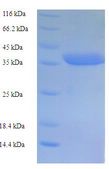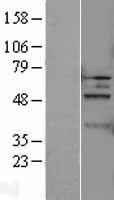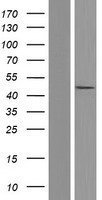order histories, retained contact details for faster checkout, review submissions, and special promotions.
Forgot password?
order histories, retained contact details for faster checkout, review submissions, and special promotions.
Location
Corporate Headquarters
Vector Laboratories, Inc.
6737 Mowry Ave
Newark, CA 94560
United States
Telephone Numbers
Customer Service: (800) 227-6666 / (650) 697-3600
Contact Us
Additional Contact Details
order histories, retained contact details for faster checkout, review submissions, and special promotions.
Forgot password?
order histories, retained contact details for faster checkout, review submissions, and special promotions.
CASP5 / Caspase 5
caspase 5, apoptosis-related cysteine peptidase
CASP5 / Caspase 5 is a member of the cysteine-aspartic acid protease (caspase) family. Sequential activation of caspases plays a central role in the execution-phase of cell apoptosis. Caspases exist as inactive proenzymes which undergo proteolytic processing at conserved aspartic residues to produce two subunits, large and small, that dimerize to form the active enzyme. Overexpression of the active form of this enzyme induces apoptosis in fibroblasts. Max, a central component of the Myc/Max/Mad transcription regulation network important for cell growth, differentiation, and apoptosis, is cleaved by this protein; this process requires Fas-mediated dephosphorylation of Max. The expression of this gene is regulated by interferon-gamma and lipopolysaccharide. Alternatively spliced transcript variants have been identified for this gene.
| Gene Name: | caspase 5, apoptosis-related cysteine peptidase |
| Family/Subfamily: | Protease , Cysteine C14 |
| Synonyms: | CASP5, CASP-5, Caspase 5, Caspase-5, ICE(rel)III, ICEREL-III, ICE(rel)-III, Ich-3, Protease TY, ICH3, Protease ICH-3, TY protease |
| Target Sequences: | NM_004347 NP_004338.3 P51878 |








If you do not find the reagent or information you require, please contact Customer.Support@LSBio.com to inquire about additional products in development.










